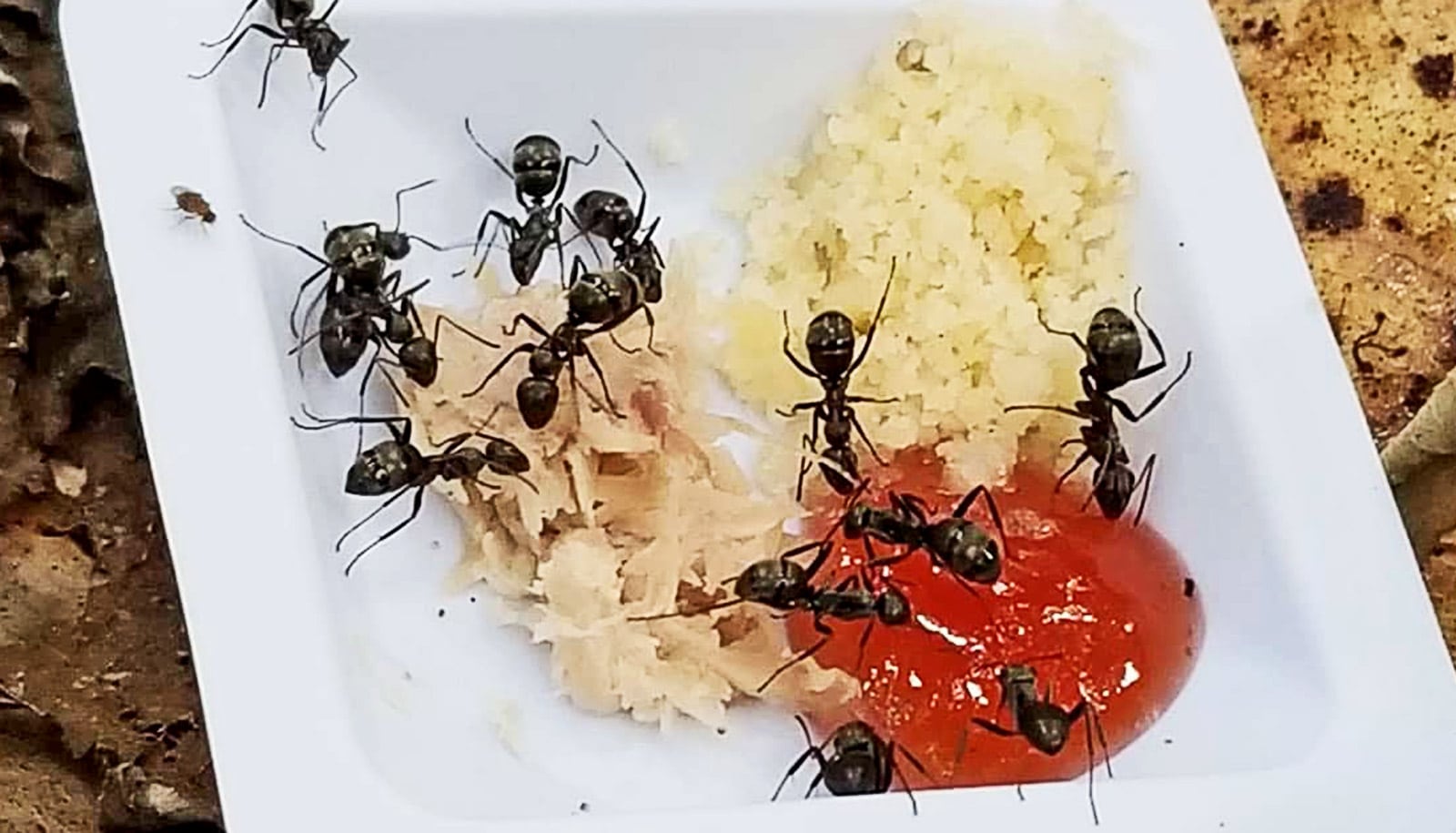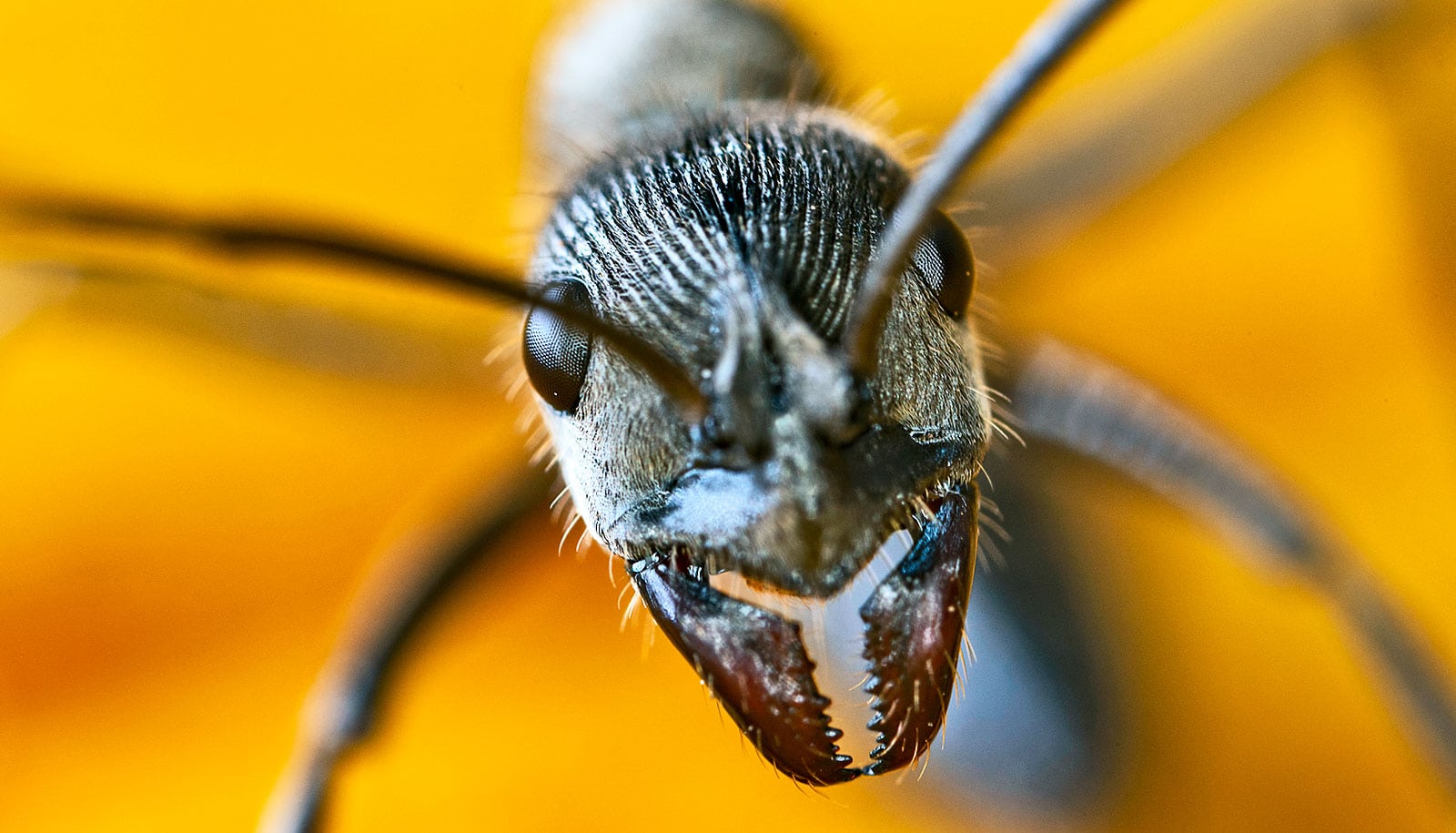Some ants move much more methodically than previously thought, a new study shows.
When strolling through an unfamiliar grocery store, you may find yourself methodically walking down each aisle to ensure you find everything you need without crossing the same path twice. At times, you’ll stray from this orderly process, such as when you see a vibrant “sale” sign from across the store or realize that you forgot something.
According to the study in the journal iScience, some ants go about their search for food and shelter in a similar manner.
The researchers found that when a colony of rock ants is placed in an unfamiliar environment in a lab, the ants wander in a way that’s not as random as previously thought. The ants follow a systematic meandering pattern combined with some random movement—a method with the potential to optimize exploration in their natural environment.
“Previously, researchers in the field assumed that ants move in a pure random walk when searching for targets of which they don’t know their location,” says Stefan Popp, lead author of the paper and a graduate student in the ecology and evolutionary biology department at the University of Arizona. “We found that rock ants show a striking, regular meandering pattern when exploring the area around their nests.”
In Arizona, these ants can be found nesting between or under rocks in areas above elevations of 7,000 feet. These slow-moving critters are only about half the length of a medium grain of rice.
The study finds that the ants’ meandering, or zigzag, walking pattern may make their search more efficient than a purely random search. This is because the ants can explore a large area in less time, as they cross their own paths less frequently.
“These ants don’t form obvious foraging trails like many ants we are familiar with,” Popp says. “Instead, the colony depends on individual foragers finding resources, making their search strategy a crucial part of colony success.”
According to the researchers, the evolutionary advantage of meandering found in these rock ants could have possibly evolved in other species of insects and animals as well. The researchers also say that the ants’ movement could someday be used to inform the design of autonomous swarms of robots that perform search and rescue missions in disaster areas or explore landscapes on other worlds.
Because it is difficult to track ants in their natural environment, Popp and his team collected rock ant colonies from atop and around Mount Lemmon, just north of Tucson. The team then moved the ants to the lab, placing them in an enclosed arena with a paper floor. The enclosure measured 2 by 3 meters—giant compared to the tiny scurrying ants. After being introduced to a new home, the ants were eager to explore.
“These ants may have been patrolling the area for other competitor ants,” Popp says, explaining that there is a selective pressure to keep other ants from intruding on their nest. “They may have also been searching for food and new nest sites.”
The researchers soon noticed the meandering pattern of the ants as they walked around. It raised an immediate question: Were these patterns just random squiggles, or were the ants moving in a methodical, non-random way?
To address this question, the researchers set up cameras and used automatic-tracking software, coupled with manual corrections, to track the individual paths of each marching insect over the course of five hours. The ants’ journeys were then compared to simulated ants walking in a random fashion.
“We looked at whether the direction in which an ant was moving in some way depended on the direction that it was moving before,” says coauthor Anna Dornhaus, a professor in in the ecology and evolutionary biology department. “These methods helped us realize that the ants’ search behavior was not completely random, as biologists had previously thought.”
The researchers used statistics to determine that the direction an ant turned was directly correlated to the turns it had taken previously.
“Our research showed that the ants smoothly alternate left and right turns on a relatively regular length scale of roughly three body lengths,” Popp says, “For some ants, the meandering-like search pattern was even more extreme than others, kind of like a meandering river in the Amazon basin. I am fascinated by this and wonder how the ants ensure that they don’t cross their own path again and again, while still doing extreme turns and loops.”
Popp and Dornhaus note that they don’t know how this search behavior changes across an ant’s lifetime, or even if individual ants are aware of it.
Regardless, the combination of meandering and randomness may be optimal for searching for resources in an unknown environment. The systematic approach can keep an ant close to its nest without crossing back and forth on previously explored ground. The added randomness accounts for obstacles that come with an unpredictable, natural environment.
“Until now, the widespread assumption was that free-searching animals are incapable of searching for new resources methodically,” Popp says. “Most of the previous research on search behavior only focused on situations where the animal is already familiar with where it’s going, such as going back to the nest entrance or going back to a memorable food source.”
“Based on these results, many animals may be using complex combinations of random and systematic search that optimize efficiency and robustness in real and complex habitats,” Dornhaus says. “This discovery opens up a whole new way of looking at all animal movement.”
The researchers believe their discovery has the potential to unify different fields of science, including biology and robotics. The wanderings of these ants may have applications for real environments where a completely systematic search would fail when faced with an obstacle.
“This discovery could possibly lead to applications for roboticists as they program robots to be able to find their way around or search for something,” Dornhaus says. “In this way, they can make their algorithms more robust, so they don’t immediately fail as soon as the robot loses track of its exact location.”
Source: Kylianne Chadwick for University of Arizona


